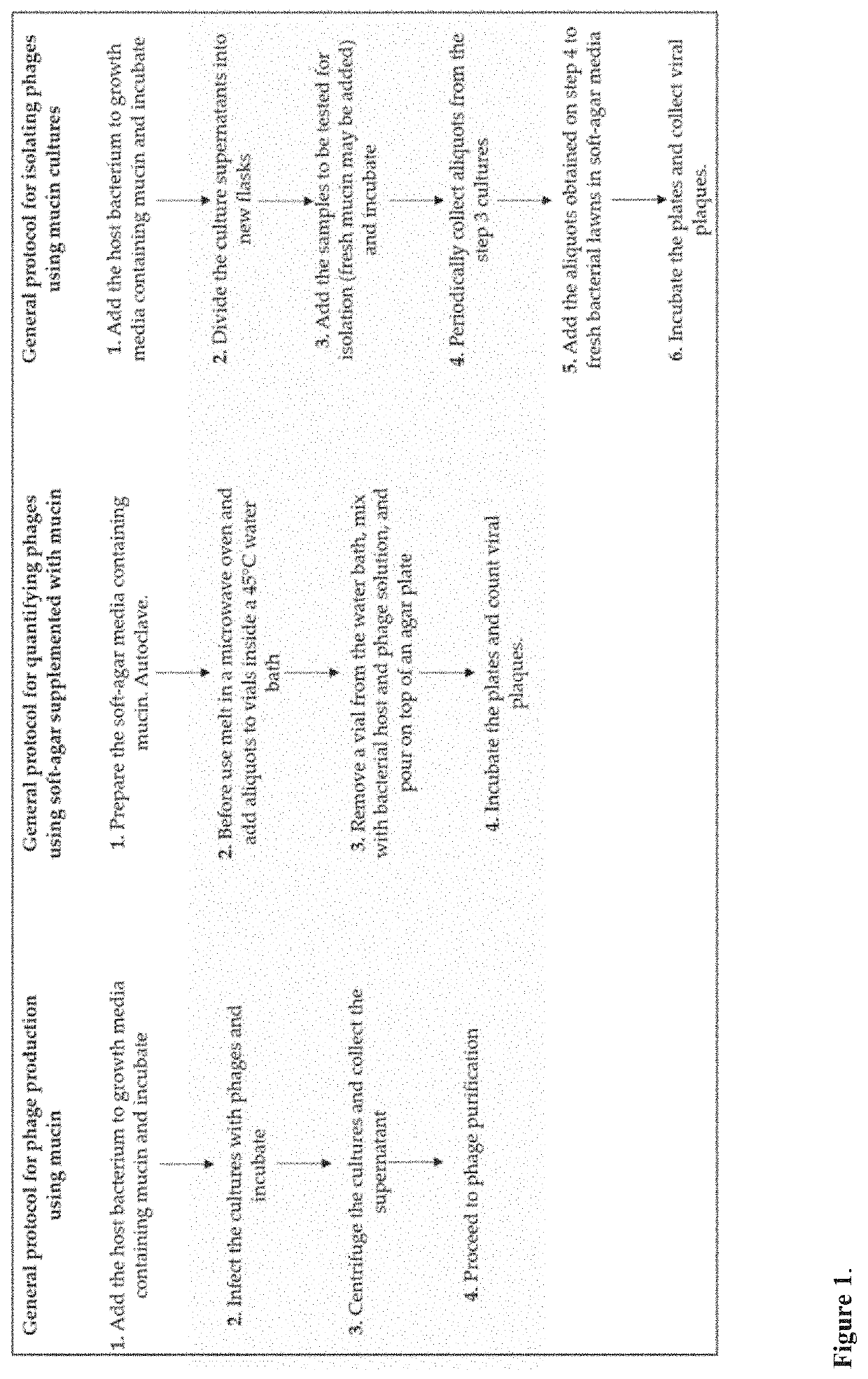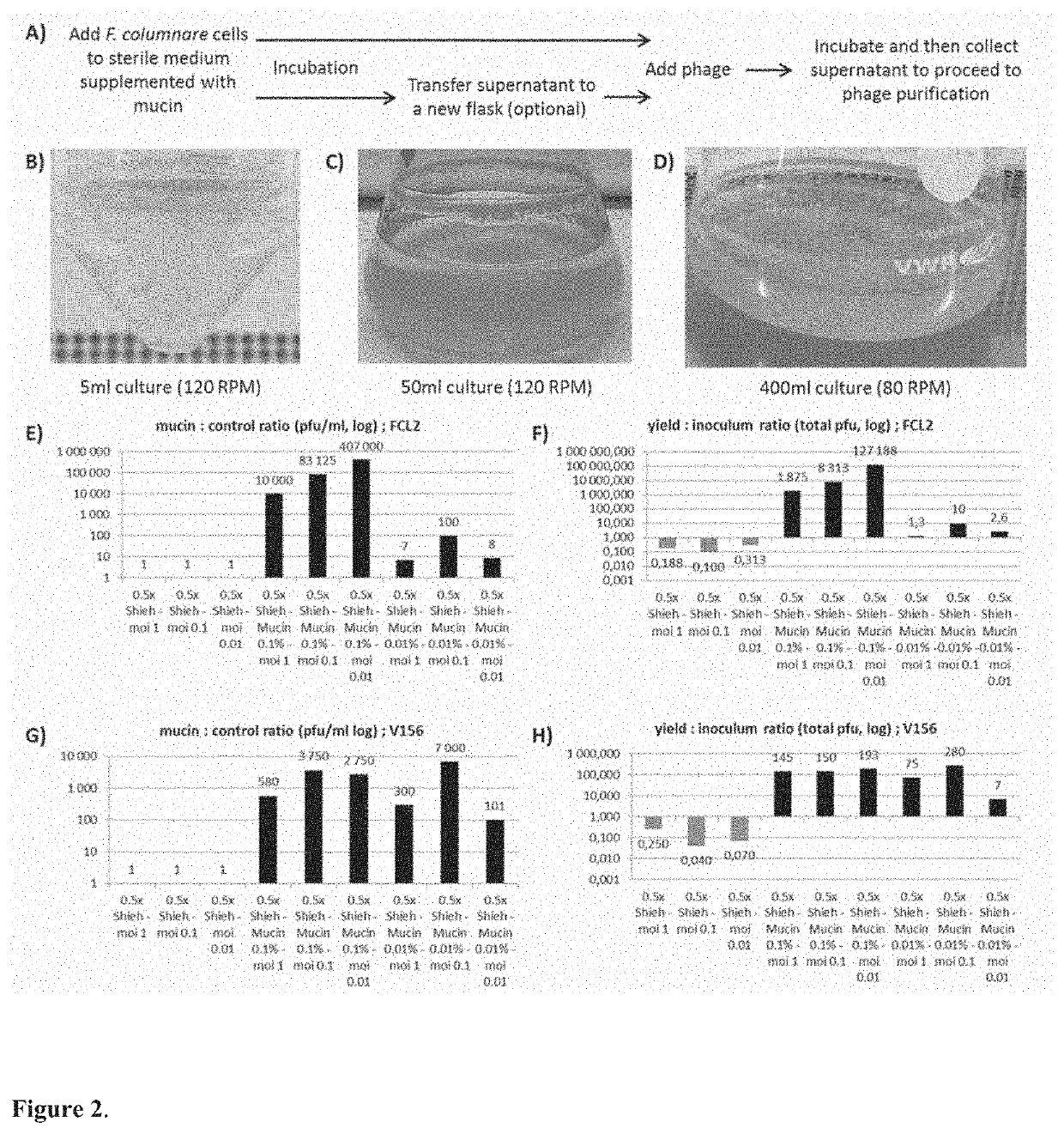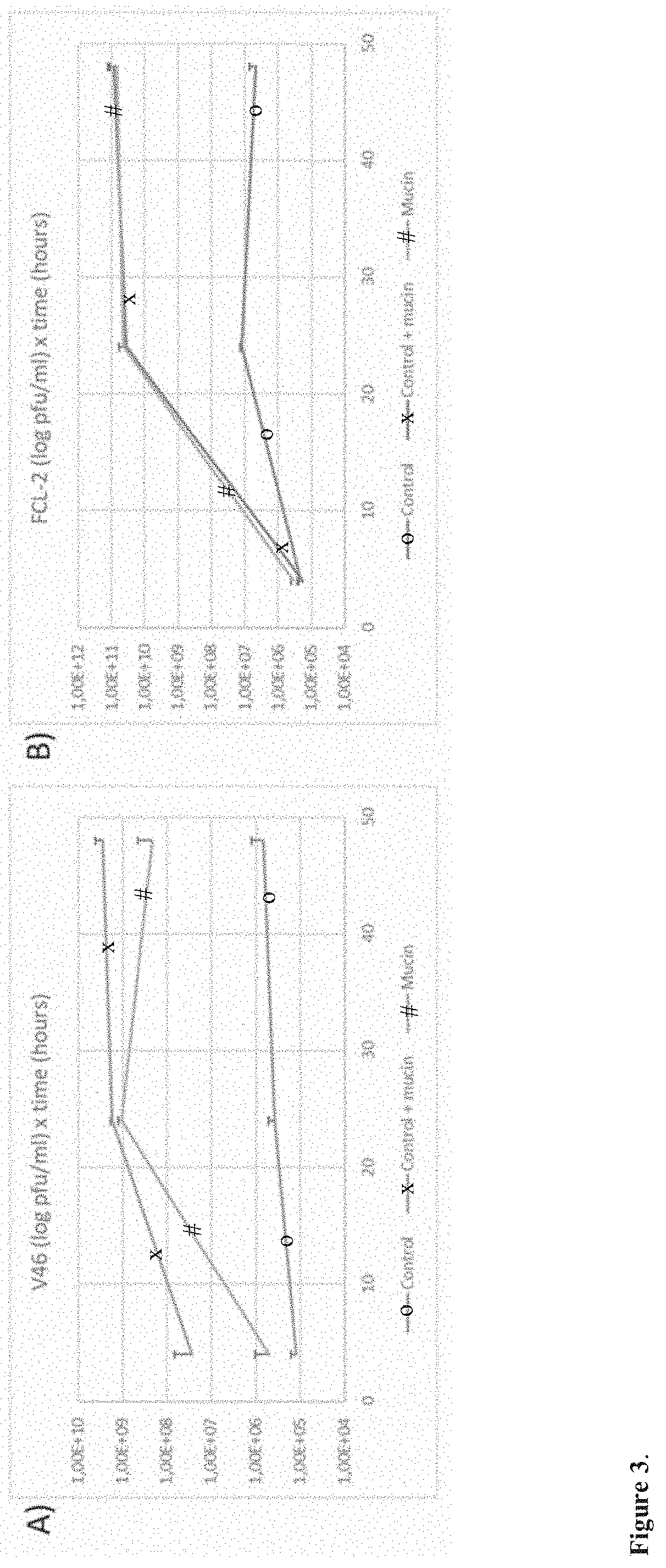Improved methods and culture media for production, quantification and isolation of bacteriophages
a technology of bacteriophage and culture media, applied in the field of practical bacteriology and applied virology, can solve the problems of difficult to isolate these viruses from the environment, difficult to grow them using conventional phage production techniques, difficult to implement in large scale, etc., and achieve the effect of increasing susceptibility
- Summary
- Abstract
- Description
- Claims
- Application Information
AI Technical Summary
Benefits of technology
Problems solved by technology
Method used
Image
Examples
example 1
acterium columnare Phage Production Using Mucin
[0066]1. 5×104 cfu of F. columnare strain B185 or B245, from a fresh overnight culture, were added to five millilitres of 0.5× Shieh supplemented with 0.1% porcine mucin. Control cultures were also prepared by adding the same amount of cells to the same volume of 0.5× Shieh cultures without the supplementation. The samples were incubated at 25 degrees under 120 rpm (80 rpm if larger volumes were used in glass flasks). The formation of a thick biofilm ring on the liquid-air interface and clear or slightly turbid liquid is a good indication of appropriate culturing conditions. Examples are shown in FIG. 2.
[0067]Mucin concentration can vary, e.g., from 1 to 0.01%. For scaling up, 104 cfu / ml can be used as inoculum. If cell number quantification is not possible, the fixed volume of 15 μl of a 1 / 100 dilution of an overnight F. columnare turbid culture can be used per 5 ml of culture, with some impact to the optimal phage yield at the end.
[00...
example 2
nas sp Phage Growth Using Mucin
[0081]While testing different bacterial species from our collection we discovered that Aeromonas sp strain B135 also formed biofilm when exposed to mucin. This was taken as a cue that this bacterium could also be targeted by our methods, and we tested this hypothesis by exposing the bacterium to purified mucin or primary fish mucus and testing how its phage, V46, grew. The results revealed a similar pattern to F. columnare and phage FCL-2, showing that the methods can also be applied to other species that responds to mucin presence in the cultures, expanding their applicability.
[0082]The main difference between Aeromonas sp and F. columnare is related to the timing of mucin exposure. Probably due to a faster growth rate, exposure to mucin for optimal Aeromonas sp phage should be shorter than F. columnare. This has been tested and the details are shown below as example of Aeromonas sp phage V46 in purified mucin cultures.
[0083]1. Five μl of OD 0.02 Aero...
example 3
r Producing Flavobacterium columnare Lawns Using Soft-Agar-Mucin Shieh for Phage Titrations
[0088]1. The culture medium was prepared by adding 0.1% (w / v) porcine mucin to the normal soft-agar Shieh recipe. Mucin concentration can vary from 1 to 0.001%.
[0089]2. The medium was autoclaved (121 degrees Celsius, 15 minutes) immediately and stored at room temperature.
[0090]3. Before using the media was melted in a microwave oven and 3 ml was pipetted to a glass vial inside a 45 degrees water bath.
[0091]4. The vial was removed from the water bath and cooled down, then 200-300 μl of any F. columnare strain from previously prepared fresh overnight cultures was added to the vial. A Petri dish containing normal Shieh-agar was then overlayed with the contents of the vial.
[0092]5. The plates prepared were incubated for 2 to 3 days at room temperature for the growth of the bacterial lawns.
[0093]The viruses to be titrated were either mixed in the 200-300 μl volume containing the bacteria on step 4 ...
PUM
| Property | Measurement | Unit |
|---|---|---|
| time | aaaaa | aaaaa |
| time | aaaaa | aaaaa |
| pH | aaaaa | aaaaa |
Abstract
Description
Claims
Application Information
 Login to View More
Login to View More - R&D
- Intellectual Property
- Life Sciences
- Materials
- Tech Scout
- Unparalleled Data Quality
- Higher Quality Content
- 60% Fewer Hallucinations
Browse by: Latest US Patents, China's latest patents, Technical Efficacy Thesaurus, Application Domain, Technology Topic, Popular Technical Reports.
© 2025 PatSnap. All rights reserved.Legal|Privacy policy|Modern Slavery Act Transparency Statement|Sitemap|About US| Contact US: help@patsnap.com



